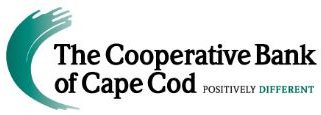By Andrew Wade
With the recent news of the Trump Administration’s 30 percent tariff on imported solar panels, we have been receiving a lot of calls asking how this will affect My Generation Energy as a company as well as the solar industry as a whole. The good news is that it has much less of an impact than originally anticipated.
A tariff is simply a tax on imports or exports. There are two types of tariffs, those that are calculated as a fixed percentage on the item and those that are calculated as a fixed dollar amount. The new tariff imposes a 30 percent tax on imported panels in year one, which is actually preferable to a fixed solar amount if you are thinking about going solar. Because the tariff is percentage-based, its actual impact on prices will shrink each year as the price of imported solar panels continues to fall. Due to advances in solar manufacturing, the cost of solar panels has fallen between 2 percent and 6 percent per year for the past several years.
According to a fact sheet released by the U.S. Trade Representative, this tariff will last four years and will fall by 5 percent annually, dropping to a 15 percent tariff in 2021. Market experts estimate that we will see an increased module price around $0.11 per watt in year one and will be reducing down to $0.04 cent per watt by year four.
For a typical residential installation, the homeowner is only expected to see as much as a 4 percent increase on the cost of the panels themselves. Though it will have a minimal impact on the total cost of the system, the homeowner will be able to further benefit from the 30 percent federal tax credit they receive for owning the system.
In addition to the solar tariff, the current state-based SREC incentive program (Solar Renewable Energy Certificates) has reached its cap and is leading the state to a new program called Solar Massachusetts Renewable Target (SMART). The SMART program will likely begin summer 2018, but until then, homeowners are still eligible for the SREC II program.
So, what’s the difference? With SRECs, you’re receiving a certificate that you can trade on the market, the value of which varies depending on market conditions, including supply and demand. SMART, on the other hand, is fixed: Once you’re awarded a particular incentive amount per kWh, the incentive rate is set and that is the rate you are going to receive for the duration of the incentive program.
One major difference between the current SREC program and SMART is that, in addition to the baseline incentive amount, the program offers bonuses for particular types of installations.
These “adders” increase the per-kWh incentive for low-income households, community solar gardens, using energy storage, as well as other types of innovative solar applications. With the potential for further changes in incentive programs, now is a great time to investigate solar.
Andrew B. Wade is President and CEO of My Generation Energy. He can be reached at (508) 237-8228 or andrew@mygenerationenergy.com.
Energy: Is the bad really that bad for the future of solar?

Select to Read Similar Content:




















